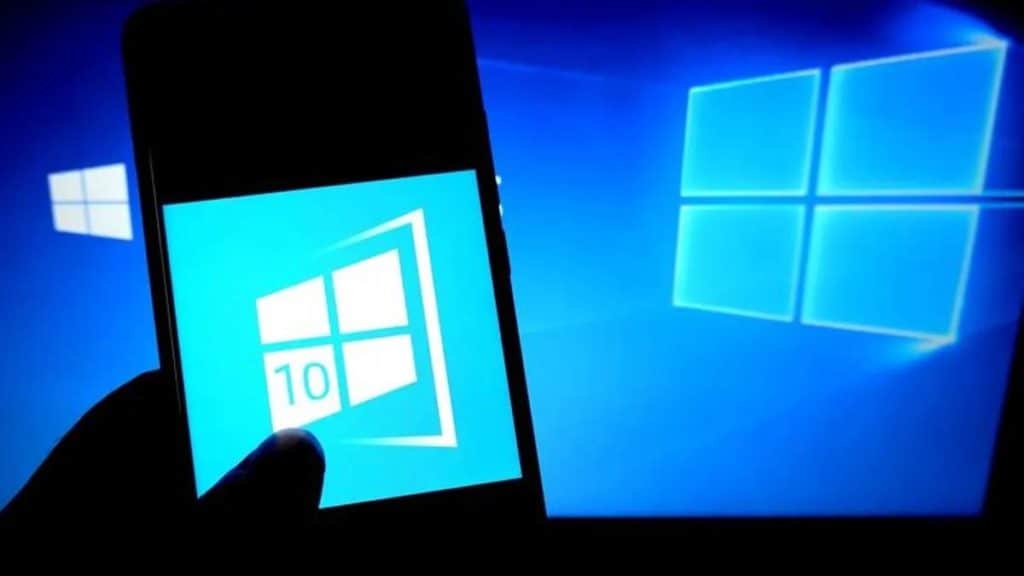Windows is the most popular desktop operating system that powers 1.6 billion active devices. Due to its outstanding popularity, it’s a primary choice for cybercriminals looking for the best returns. In its annual Digital Defense Report, Microsoft states that
“Cybercriminals continue to act as sophisticated profit enterprises. Attackers are adapting and finding new ways to implement their techniques, increasing the complexity of how and where they host campaign operation infrastructure.”
Cybercrime has been spiking for the last few years, targeting enterprises and individual devices alike. On the other hand, cybersecurity professionals rush to release new security software to protect all sectors. This article overviews the main cyber dangers for Windows OS and provides effective safety tips.

Most Common Windows Threats
We can divide Windows threats into two categories:
- Vulnerabilities inherent to Windows systems;
- Cross-platform outside threats.
Regarding the first category, PowerShell-based attacks constitute one-fourth of all Windows breaches. Attackers don’t need to introduce additional malicious elements but exploit the existing PowerShell program.
You can identify such threats by monitoring cmd.exe processes with obfuscation and process creation event 4688. Additional software recommendations come in the next chapter.
Binary process hacks exploiting essential Rundll32 programs constitute one-fifth of attacks against Windows. System process modification follows closely. A third-party antivirus or the inbuilt Windows Defender antivirus helps to neutralize both threats.
Malware remains the most popular cyber-attack outside threat. According to AV-Test statistics, they notice 450,000 new malicious programs daily. Hackers target all systems, but most new malware is aimed at Windows because it has the most users.
Distributed Denial of Service (DDoS) and phishing attacks take second and third places, respectively. The former can flood business or governmental servers with bot requests forcing them to shut down.
It’s especially damaging to businesses that can lose millions of revenue if their websites go down during sales. Simultaneously, phishing exploits human error, tricking users into downloading infectious email attachments or visiting a fraudulent website. This method is often used to extract confidential business data.
Cybersecurity Tips for Windows Computers
Windows have numerous built-in security features which you can use.
Firstly, doing a system restore point would be best once you have configured your Windows device. You can use the Windows Cortana search box to look for system restore. Create a restore point; you can always return to it if something happens to the operating system.
No less critical is creating a system backup. Once again, search for the backup keyword and follow Windows’s instructions. A system restore point will not help if your device gets physically broken or stolen, but a data backup guarantees you will not lose your files.
To enhance your data security even further, you can use trusted third-party Cloud services to store your backup online.
Pay close attention to the security features of your Cloud service provider because you will trust it with personal information. On the other hand, you can use this method to restore your files on whatever device is connected to the Internet, which is extremely comfortable.
Whoever your device manufacturer is, they will most likely install chosen software before selling it to you. That’s why Windows systems may have unnecessary software called bloatware. This software may promote their services but can also monitor your data. If you are using browser like chrome, make sure to install Surfshark for chrome.
Navigate to your apps list, carefully inspect it, and delete unnecessary programs. This way, you will secure your device and have more storage space for other programs.
Lastly, enable Windows Defender Firewall to inspect incoming traffic to your device and block malicious elements. You can also turn on notifications whenever it blocks a new app so that you know where the danger comes from. Don’t forget to turn the Firewall on both public and private networks.
Windows lacks several crucial cybersecurity features. First, a professional third-party password manager is best to secure Windows passwords. Windows offers a native credential manager, but security-wise it’s not nearly as good as other software.
A third-party password manager stores your passwords in an encrypted vault that only you can access. Instead of remembering your passwords by heart, you only need to remember a single master password that will unlock the vault.
Moreover, you can combine it with Multi-factor-authentication, so even if someone obtains your master password, they cannot unlock the vault. Password security is part of a broader online identity protection toolkit, and luckily, there are ways to protect your identity online.
Another crucial addition is a Virtual Private Network. Once again, Windows native VPN settings lack advanced features. With a reliable third-party VPN, you will get real-time threat protection, a data-breach scanner, AdBlock, and more. Use it whenever you connect to any public network.
The final lesson is never to skip an update. Windows OS updates include essential security fixes; if you postpone them, hackers can exploit your device’s vulnerabilities. The same applies to every software on your computer, so update it all on time.
Conclusion
Even though Windows is the primary target for cybercriminals, it doesn’t mean this system is unsafe. If you combine its native cybersecurity features with trusted third-party software, you can make it as secure as any other operating system.